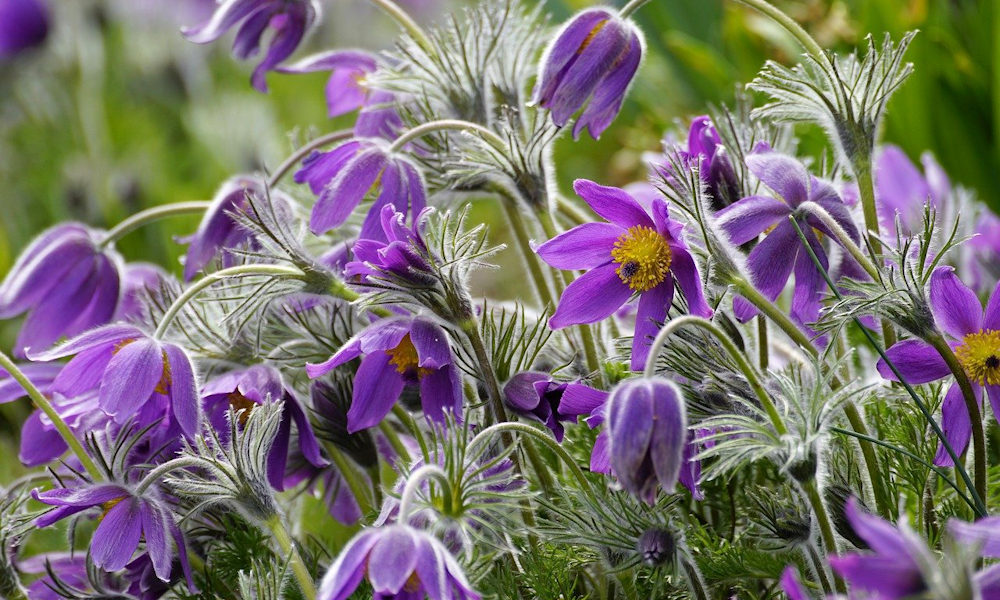As winter retreats, a delightful herald of spring emerges in the form of the pasque flower. With its vibrant blossoms and resilient nature, this captivating plant symbolizes the arrival of warmer days and offers a fascinating glimpse into the wonders of nature’s seasonal transitions.
Pasque flowers (Pulsatilla) are beautiful and unique perennial plants that can add charm to any garden. Here’s some information to get you started:
Origin
Pasque flowers belong to the Pulsatilla genus, which is a part of the Ranunculaceae family. They are native to various regions in Europe, Asia and North America. Different species of pasque flowers can be found in different parts of the world.
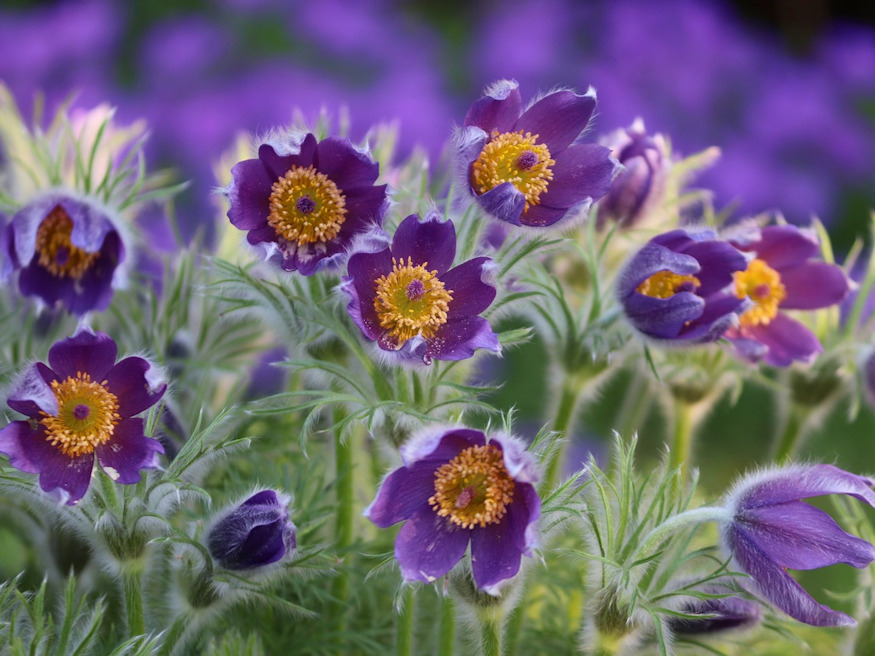
Appearance
Pasque flowers are known for their distinctive, bell-shaped flowers that bloom in early spring. The flowers come in a range of colors, including shades of purple, blue, yellow and white, depending on the species and cultivar. They have striking feathery petals and a central cluster of yellow stamens. The blooms often have a slightly fuzzy or hairy texture.
The foliage of pasque flowers is equally attractive. The leaves are deeply divided, fern-like and typically have a silver-green or grayish hue. The foliage emerges before the flowers and provides an interesting display even when the plant is not in bloom.
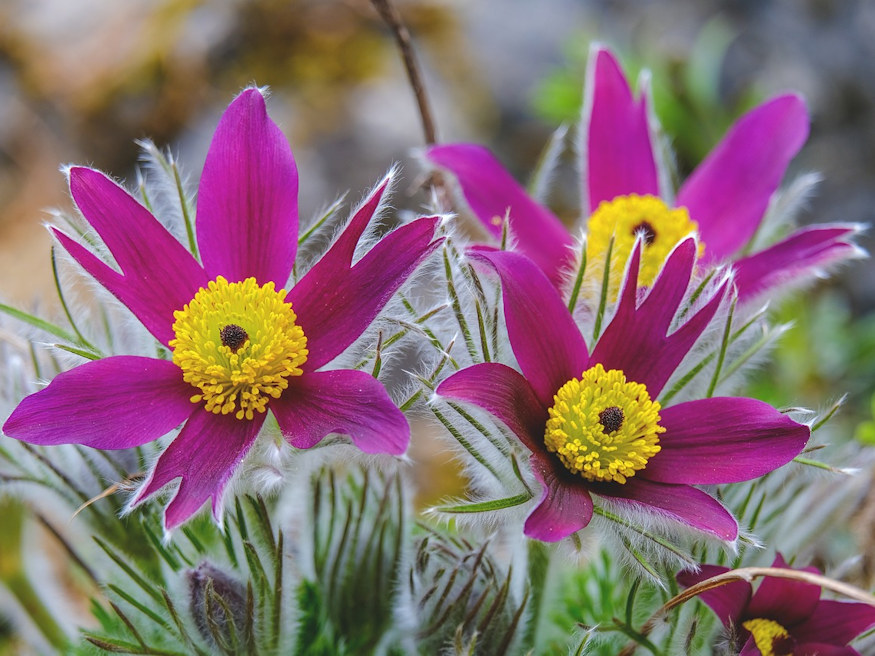
Cultivation Needs
Pasque flowers are generally considered low-maintenance plants, making them suitable for beginner gardeners. Here are some important points to keep in mind:
- Sunlight: Pasque flowers thrive in full sun to partial shade. They require at least 6 hours of direct sunlight each day for optimal growth and blooming.
- Soil: Well-draining soil is essential for pasque flowers. They prefer soil that is slightly alkaline or neutral. Sandy or loamy soil types are generally suitable. Ensure that the soil doesn’t become waterlogged, as excessive moisture can lead to root rot.
- Watering: Pasque flowers have moderate water needs. While they prefer consistently moist soil, it’s important to avoid overwatering, as it can cause root problems. Water the plants deeply but infrequently, allowing the top inch (2-3 cm) of soil to dry out between watering sessions.
- Pruning and Maintenance: Pasque flowers benefit from light pruning after flowering. Trimming the spent flowers and removing dead leaves helps maintain the plant’s appearance and promotes new growth. During the dormant season, you can cut back the foliage to ground level.
- Propagation: Pasque flowers can be propagated through seeds or division. Collect seeds from mature plants in late spring or early summer, and sow them in well-prepared soil. Division can be done in early spring or early fall by separating the plant into smaller sections and replanting them.
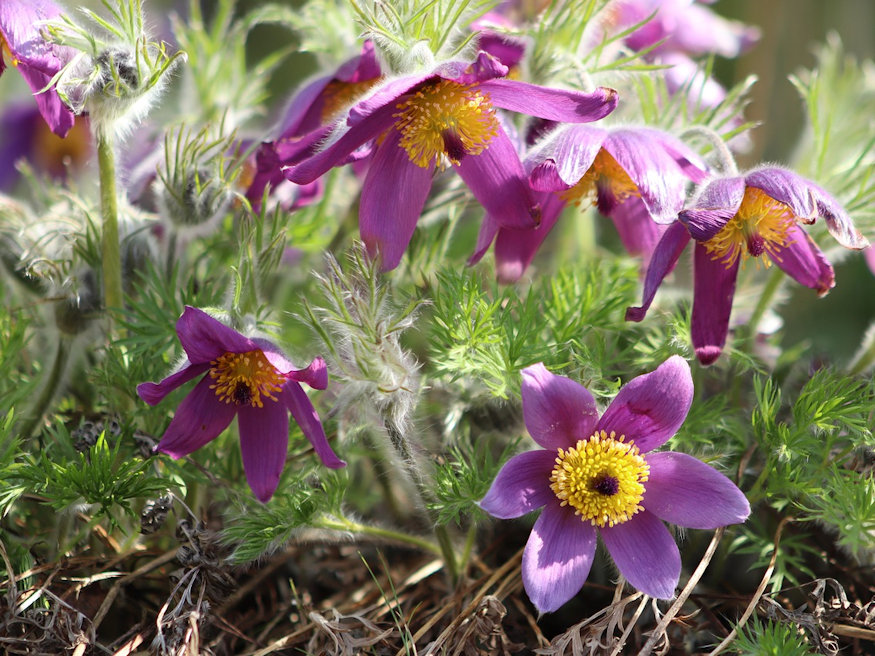
Temperature and Hardiness
Pasque flowers are resilient plants that can withstand cold temperatures. Most species are hardy in USDA zones 3-8. They can tolerate frost and even light snow, making them a great choice for early spring blooms.
In Europe, pasque flowers are native to various regions and can generally be found in colder climates. They are adapted to withstand the cold temperatures commonly experienced in Europe, including parts of Central and Eastern Europe, the Alps and northern regions.
Pasque flowers are known to be hardy in Europe, with many species being able to tolerate the colder conditions. In fact, they are often found growing in alpine meadows and rocky slopes, where the climate can be harsh.

It’s important to note that the hardiness of pasque flowers may vary depending on the specific species or cultivar. Some species may be more adapted to certain regions within Europe than others. It’s always a good idea to check the specific hardiness information for the particular species or cultivar you intend to grow in your location.
In general, pasque flowers should thrive in areas with cold winters and cool summers, making them a suitable choice for gardeners in various parts of Europe.
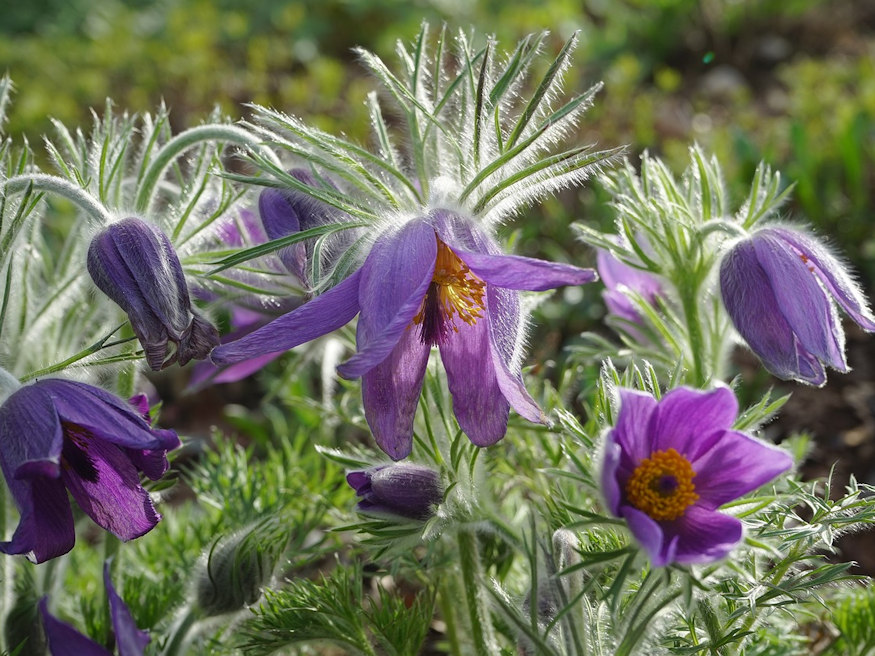
Interesting Facts
- Medicinal Uses: Pasque flowers have a history of traditional medicinal use. Some Native American tribes used the plants for treating various ailments such as coughs, headaches and rheumatism. However, it’s important to note that pasque flowers contain toxic compounds and should not be consumed without proper knowledge and guidance.
- Attracts Pollinators: Pasque flowers are an excellent addition to pollinator-friendly gardens. Their showy flowers attract bees, butterflies and other beneficial insects, contributing to the overall biodiversity of the garden.
- Hardy Alpine Plants: Many pasque flower species are adapted to high-altitude environments, such as alpine meadows and rocky slopes. They have developed special adaptations to survive in these harsh conditions, including hairy stems and leaves that provide protection against cold temperatures and strong winds.
- Endangered Species: Some pasque flower species are considered rare and endangered. Human activities, habitat loss, and overcollection have led to the decline of certain populations. It’s important to be mindful of conservation efforts and ensure responsible sourcing when considering growing or collecting pasque flowers.
- Symbolic Significance: The pasque flower holds symbolic value in various cultures. It is often associated with Easter and considered a symbol of renewal and rebirth due to its early spring blooming period.
- Seeds with Elaiosomes: Pasque flower seeds are equipped with elaiosomes, which are oil-rich structures that attract ants. Ants collect the seeds and carry them to their nests, consuming the elaiosomes while leaving the seeds behind. This dispersal mechanism helps pasque flowers spread and establish in new areas.
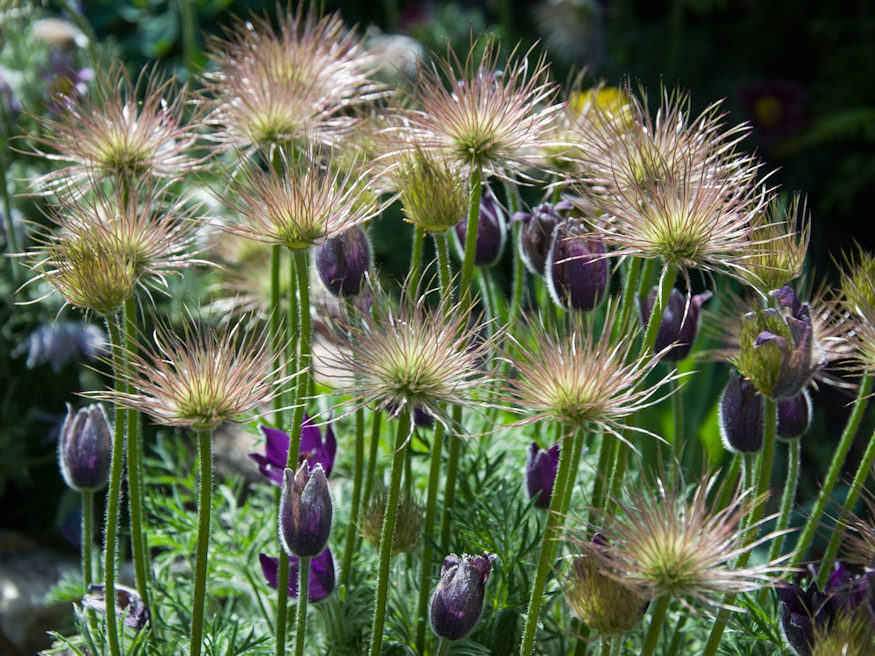
Pasque flowers can be an excellent addition to rock gardens, borders or naturalized areas. They attract pollinators like bees and butterflies and are generally resistant to pests and diseases.
Remember to check the specific requirements of the pasque flower species or cultivar you choose, as some variations may have slightly different needs. Happy gardening!



